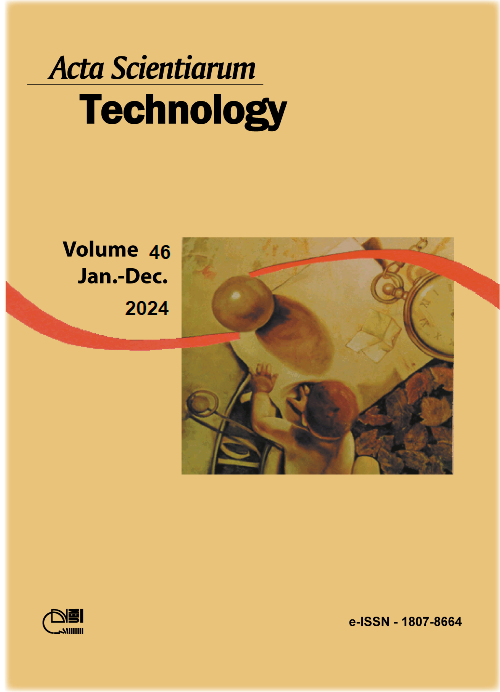Designing a Temporin-1CEa Analog with Improved in Vitro Selectivity towards Prostate Cancerous Cell Line (LNCaP)
DOI:
https://doi.org/10.4025/actascitechnol.v46i1.67217Palavras-chave:
analog designing; antimicrobial peptide; cancerous cell line; cytotoxicity; in vitro selectivity; normal cell line; temporin.Resumo
Temporins are small antimicrobial peptides which have cytotoxic effects against different cancerous cell lines. However, their cytotoxicity against normal cells has been reported in some studies. Designing new temporin analogs with selective cytotoxicity against cancerous cell lines is considered a goal in drug development. In this regard, four new temporin-1CEa analogs (either C-terminally α-amidated or not) with increased net positive charge, as well as the potential of hydrogen bond formation were designed and their selective cytotoxicity against prostate carcinoma cell line (LNCaP) was evaluated. MTT assay was employed to test the simultaneous effects of the modifications on the cytotoxicity of the analogs against both normal (HFFF2) and cancerous (LNCaP) cell lines. Then, the in vitro selectivity index of each analog was determined using the equation of selectivity index (SI= IC50 of peptide against normal cell line / IC50 of peptide against cancerous cell line). The structural modifications of temporin-1CEa (increasing the net positive charge and removing C-terminally amidated group, as well as the potential of hydrogen bond formation on the non-polar face of α-helical structure) reduced the cytotoxicity of K2K3W15-COOH analog against both cancerous (LNCaP) and normal (HFFF2) cell lines. However, the modifications resulted in improving the in vitro selectivity index of K2K3W15-COOH compared to the temporin-1CEa (1.67 vs. 1.33, respectively). The results of the present study indicated that some structural modifications may lead to a diminution in the cytotoxicity of new analogs against cancerous cells. However, the same modifications can be associated with better selectivity indexes of new analogs due to a further decrease in their cytotoxicity against normal cells.
Downloads
Downloads
Publicado
Como Citar
Edição
Seção
Licença
DECLARAÇíO DE ORIGINALIDADE E DIREITOS AUTORAIS
Declaro que o presente artigo é original, não tendo sido submetido í publicação em qualquer outro periódico nacional ou internacional, quer seja em parte ou em sua totalidade.
Os direitos autorais pertencem exclusivamente aos autores. Os direitos de licenciamento utilizados pelo periódico é a licença Creative Commons Attribution 4.0 (CC BY 4.0): são permitidos o compartilhamento (cópia e distribuição do material em qualqer meio ou formato) e adaptação (remix, transformação e criação de material a partir do conteúdo assim licenciado para quaisquer fins, inclusive comerciais.
Recomenda-se a leitura desse link para maiores informações sobre o tema: fornecimento de créditos e referências de forma correta, entre outros detalhes cruciais para uso adequado do material licenciado.















